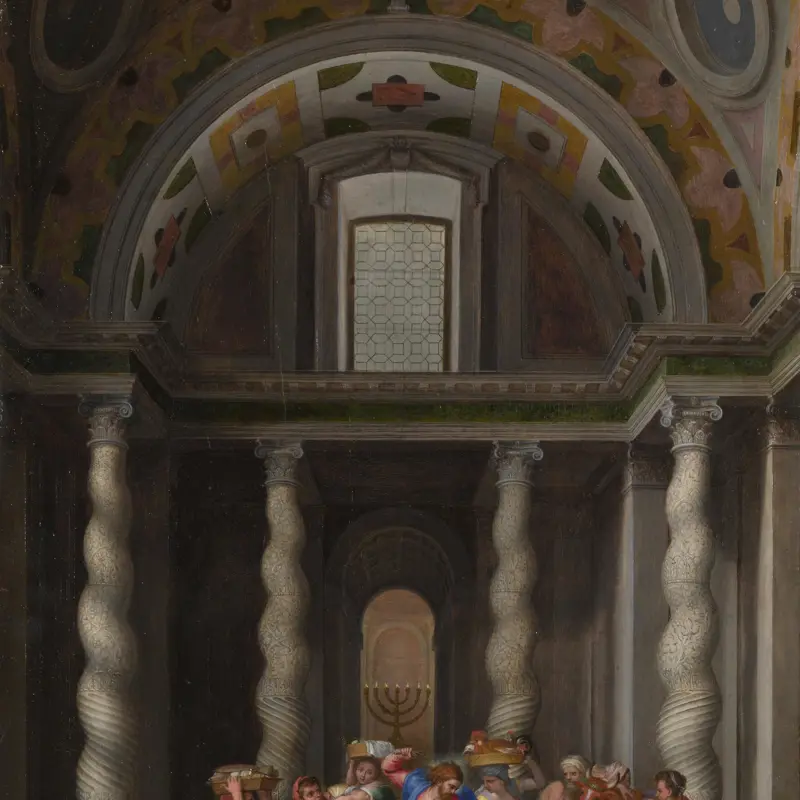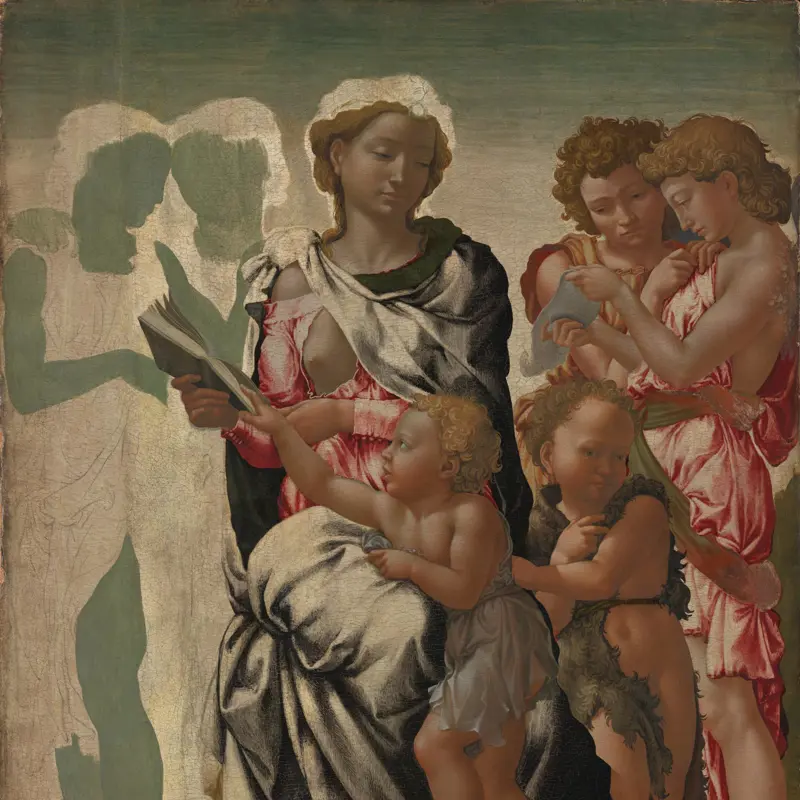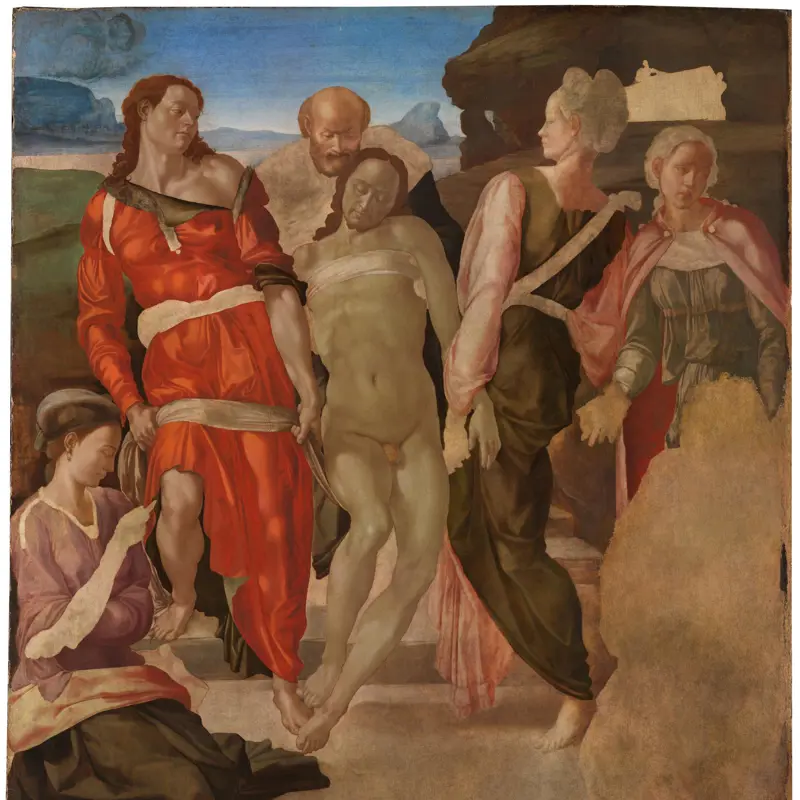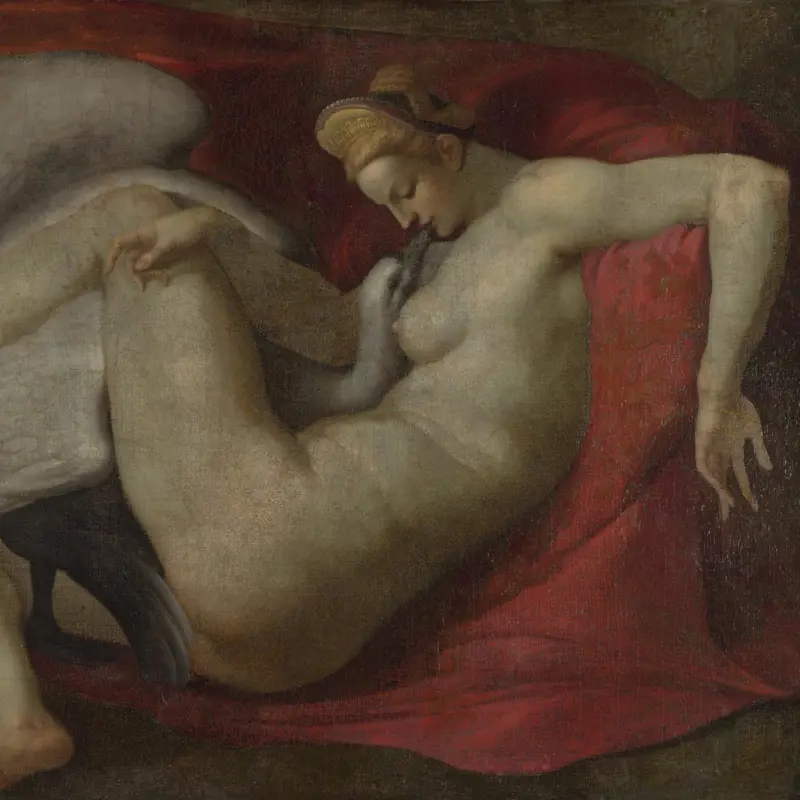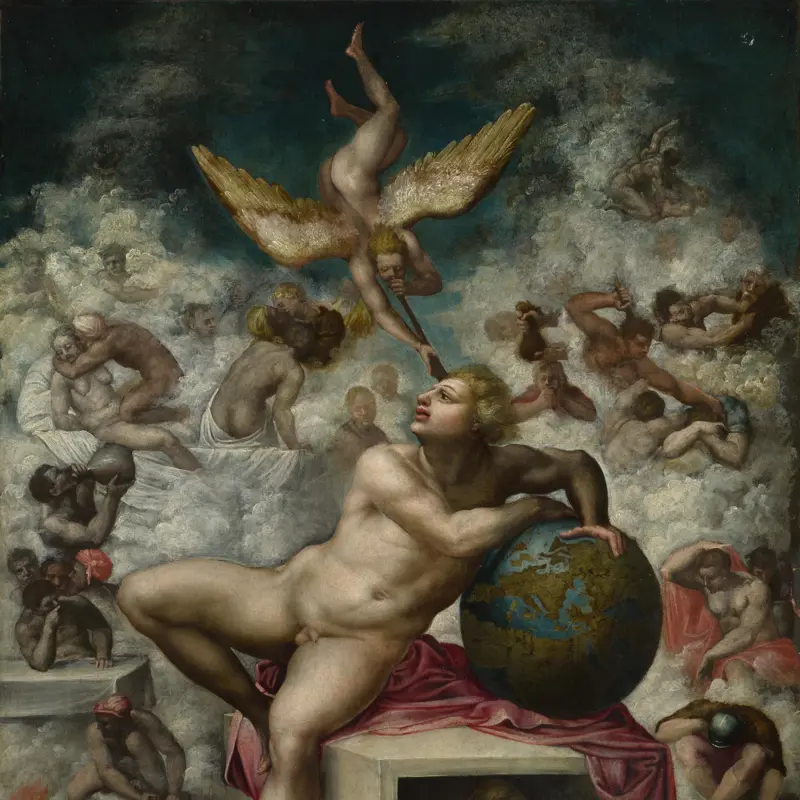Marcello Venusti, after Michelangelo, 'The Holy Family (Il Silenzio)', second half of the 1540's
About the work
Overview
Christ lies across his mother’s lap in a position intended to recall the pietà, when his dead body was returned to her after the Crucifixion. Saint Joseph watches him sleeping and the infant John the Baptist raises his finger to his lips, asking us for silence.
The Virgin holds open a Bible. The position of the fingers of her other hand suggests that she was originally meant to be lifting a veil from her child. The hourglass marks the passing of time and symbolises the inevitability of death. As the sand runs from the upper bulb to the lower one, Christ’s sacrifice, as prophesied in the Bible, comes ever closer.
This is one of many painted copies based on a presentation drawing in red chalk by Michelangelo (Harley Gallery, Nottinghamshire), which dates from about 1538. The composition has been known as ‘Il Silenzio’ (Silence) since the sixteenth century. Venusti’s picture was probably painted in the second half of the 1540s.
Key facts
Details
- Full title
- The Holy Family (Il Silenzio)
- Artist
- Marcello Venusti, after Michelangelo
- Artist dates
- Born 1512-15; died 1579; 1475 - 1564
- Date made
- Second half of the 1540's
- Medium and support
- Oil on wood
- Dimensions
- 43.2 × 28.6 cm
- Acquisition credit
- Bought, 1887
- Inventory number
- NG1227
- Location
- Not on display
- Collection
- Main Collection
Provenance
Additional information
Text extracted from the ‘Provenance’ section of the catalogue entry in Cecil Gould, ‘National Gallery Catalogues: The Sixteenth Century Italian Schools’, London 1987; for further information, see the full catalogue entry.
Exhibition history
-
2011Il Rinascimento a Roma: Nel segno di Michelangelo e RaffaelloPalazzo Sciarra Colonna25 October 2011 - 12 February 2012
-
2024Michelangelo: the last decadesThe British Museum2 May 2024 - 28 July 2024
Bibliography
-
1833J.D. Passavant, Kunstreise durch England und Belgien, Frankfurt am Main 1833
-
1882Christie, Manson & Woods, Catalogue of the Collection of Pictures, Works of Art, and Decorative Objects, the Property of His Grace the Duke of Hamilton, K.T., London, 17 June 1882 - 20 July 1882
-
1888G. Redford, Art Sales: A History of Sales of Pictures and other Works and Art, with Notices of the Collections Sold, Names of Owners, Titles of Pictures, Prices and Purchasers, 2 vols, London 1888
-
1951C. Gould, 'Some Addenda to Michelangelo Studies', The Burlington Magazine, XCIII/582, 1951, pp. 279-81
-
1962Gould, Cecil, National Gallery Catalogues: The Sixteenth Century Italian Schools (excluding the Venetian), London 1962
-
1964K. Langedijk, 'Silentium', Nederlands Kunsthistorisch Jaarboek, 1964
-
1975C. Gould, Delaroche and Gautier: Gautier's Views on the 'Execution of Lady Jane Grey' and on other Compositions by Delaroche, London 1975
-
1987Gould, Cecil, National Gallery Catalogues: The Sixteenth Century Italian Schools, London 1987
-
2001
C. Baker and T. Henry, The National Gallery: Complete Illustrated Catalogue, London 2001
-
2003W.E. Wallace, 'Michelangelo and Marcello Venusti: A Case of Multiple Authorship', in F. Ames-Lewis and P. Joannides (eds), Reactions to the Master: Michelangelo's Effect on Art and Artists in the Sixteenth Century, Ashgate 2003, pp. 137-56
About this record
If you know more about this work or have spotted an error, please contact us. Please note that exhibition histories are listed from 2009 onwards. Bibliographies may not be complete; more comprehensive information is available in the National Gallery Library.

